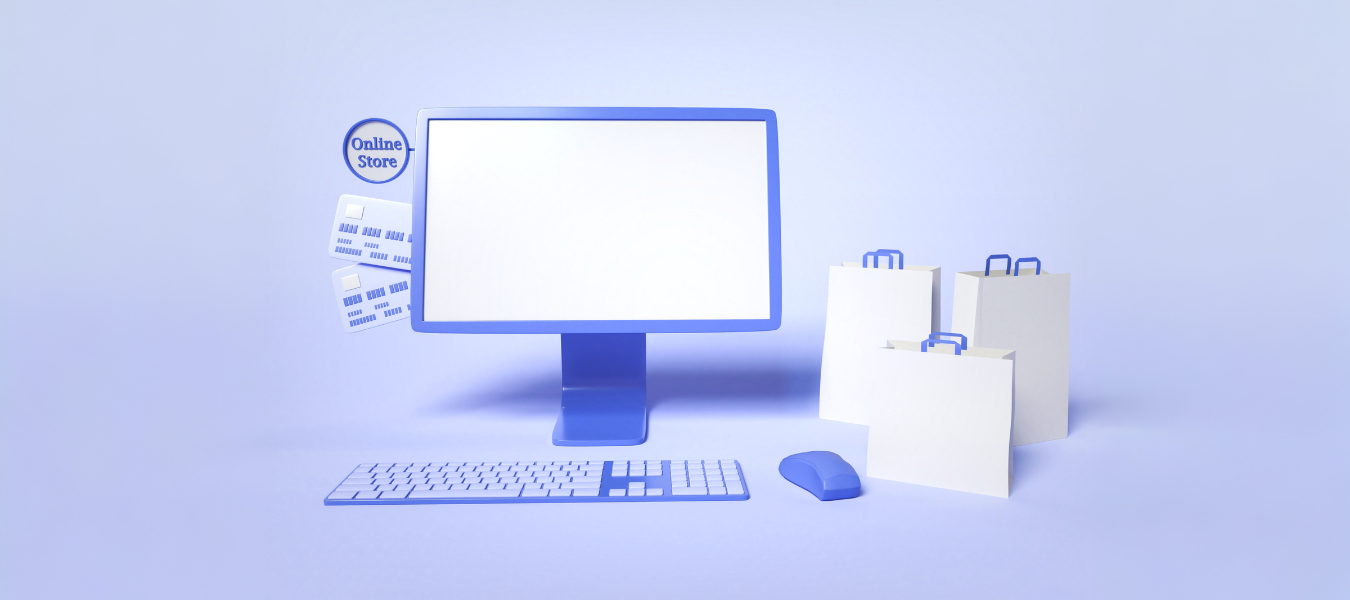



If you’ve ever thought about starting a business, selling online is one of the most exciting, profitable, and accessible ways to do it. Whether you’re looking to build a side hustle, create a full-time business, or take an existing brand to the next level, e-commerce has completely changed the way people shop and sell.
The beauty of selling online is that anyone can do it. You don’t need a physical store, a massive budget, or even prior experience in business. You can start small, test different strategies, and scale as you grow. With millions of customers shopping online every day, the opportunity to reach your perfect buyers has never been greater.
But, let’s be real — selling online isn’t as easy as just listing a product and waiting for sales to roll in. With so much competition, you need to know how to choose the right products, where to sell them, how to market effectively, and how to handle everything from fulfillment to customer service. Without the right approach, your online store could get lost in the crowd.
This guide will walk you through everything you need to know to successfully sell online. We’ll cover how to choose winning products, set up a store, attract customers, and scale your business. By the end, you’ll have a step-by-step plan to turn your e-commerce dreams into a thriving online business.
At its core, online selling (or e-commerce) is the process of offering products or services through digital platforms. Unlike traditional retail, online selling eliminates the need for a physical storefront, allowing businesses to operate entirely from a laptop, phone, or warehouse.
All of this may sound pretty exciting and quite simple, but there are still lots of factors to consider. Today’s e-commerce landscape includes marketplaces like Amazon, eBay, Walmart, and TikTok Shop, self-hosted stores through Shopify, WooCommerce, and Wix, and even social media selling via Instagram and Facebook Shops.
Each platform offers unique benefits, but the key to success is understanding where your customers are (your target audience) and choosing the right sales strategy for your products. Some sellers dominate on Amazon, while others thrive on TikTok Shop or through direct sales on their own website.
Regardless of where you sell, the benefits of e-commerce are undeniable:
If done right, selling online offers financial freedom, flexibility, and unlimited growth opportunities — but only if you take the right approach from the start.
Before you jump into building an online store, the first big decision is what you’re going to sell. Your success depends largely on finding the right product or service that people actually want to buy. Selling just random goods can result in low sales, high returns, and a lot of frustration — obviously, we wouldn’t like such an outcome, right? Let’s see how to approach this smartly.
To choose the right product, ask yourself:
If you don’t want to deal with inventory, consider dropshipping — a model where you sell products without handling stock. Instead, you list products on your website or marketplace, and when a customer places an order, your supplier ships the item directly to them. This means no upfront inventory costs and less risk.
Another profitable model is print-on-demand, where you create custom designs for products like T-shirts, mugs, and phone cases. Companies like Printify and Printful handle the printing and shipping whenever someone places an order. This is perfect for creative entrepreneurs who want to sell unique products without investing in bulk inventory.
Looking to build a long-term brand? Then private-labeling may be your strategy. You work with a manufacturer to produce products under your own brand name, giving you full control over pricing, packaging, and marketing. Private-labeling is commonly used for beauty products, supplements, kitchen gadgets, and apparel.
Now that you have your product and strategy in mind, the next step is deciding where to sell it. There are many platforms available, each with its own pros and cons. The best platform for you depends on your business goals, budget, and target audience.
If you want full control over your brand, selling through your own e-commerce website is the best choice. Platforms like Shopify, WooCommerce, and BigCommerce make it easy to set up a professional store with customizable themes, secure payment processing, and built-in marketing tools.
Owning your website means you don’t have to compete with other sellers on a crowded marketplace. You can build your own brand identity, collect customer emails, and control pricing without marketplace restrictions. However, you’ll need to invest in marketing to drive traffic to your site. It’s the only way people would know about your product or name.
Marketplaces like Amazon, eBay, Etsy, or Walmart are a great option if you aim for instant access to millions of shoppers. These platforms already have massive built-in traffic, meaning you don’t have to work as hard to attract customers.
Amazon is ideal for mass-market products, while Etsy works fine for handmade and vintage items. eBay is suitable for selling both new and used products, while Walmart Marketplace is a growing competitor to Amazon.
The downside? Competition can be intense, and marketplaces charge fees and commissions. Plus, you don’t own the customer relationship — meaning it’s harder to build long-term brand loyalty.
Social commerce is exploding, and platforms like Facebook Marketplace, Instagram Shopping, and TikTok Shop allow businesses to sell directly to consumers. If your products are highly visual or appeal to younger audiences, leveraging social media is a great strategy.
TikTok Shop, in particular, is gaining popularity with viral product trends, while Instagram and Pinterest are great for aesthetic-driven niches like fashion, beauty, and home décor.
For the best results, sell on multiple platforms to maximize exposure. Many successful e-commerce businesses have their own website, list products on Amazon and eBay, and use social media to drive traffic — all of this at the same time. This way, you’re not dependent on just one channel for sales, which is quite risky.
If you’re building your own store, setting it up properly is probably the most vital part. Your website should be fast, mobile-friendly, and optimized for conversions.
Your homepage should immediately tell visitors what your store is about. Properly structured homepage features clear branding, high-quality product images, and easy navigation. Customers should be able to find what they need in seconds — otherwise, they’ll just leave and never come back. No one likes to spend extra time guessing and scrolling tons of unnecessary info.
Product pages should be clear and compelling, with high-resolution images, detailed descriptions, and strong calls to action. If possible, include videos or GIFs to showcase your product in action.
The checkout process should be simple and fast. Offer multiple payment options like credit cards, PayPal, and Buy Now Pay Later services to accommodate different customer preferences.
Customer trust is everything. Make sure your website has secure payment processing, visible return policies, and customer reviews to build credibility.
Well, now it’s time for marketing. We want customers to actually visit your store and make a purchase, right? Successful e-commerce works by a mix of organic and paid marketing strategies.
Search Engine Optimization (SEO) is one of the most powerful long-term strategies for driving organic traffic to your store. When your website is optimized for search engines, it appears higher in Google search results, making it easier for potential shoppers to find you.
Start with keyword research to identify what people are searching for in your niche. Incorporate these keywords into product titles, descriptions, blog content, and metadata. Optimize your site structure, improve loading speed, and ensure your store is mobile-friendly, as search engines prioritize websites that offer a great user experience.
Blogging is another powerful SEO tool. Creating useful, informative content such as buying guides, how-to articles, and product comparisons can attract visitors who are actively searching for solutions your products provide. Over time, SEO helps you generate consistent traffic without paying for ads.
Today, social media isn’t just about posting product photos — it’s about building an online presence and engaging with your audience. Platforms like Instagram, Facebook, TikTok, and Pinterest allow you to connect with potential customers, showcase your products, and drive traffic to your store.
Focus on high-quality visuals, interactive content, and storytelling. Share behind-the-scenes videos, customer feedbacks, product demonstrations, and user-generated content. Social proof is incredibly effective in persuading new people to trust your brand.
Leverage influencer marketing to expand your reach. Collaborating with micro-influencers (10K-100K followers) can help introduce your products to highly engaged audiences without the hefty price tag of celebrity endorsements.
While social media and SEO help bring customers to your store, email marketing is what keeps them coming back. Email marketing consistently delivers the highest return on investment (ROI) of any marketing channel — because it allows you to build direct relationships with your customers.
Set up automated email sequences, such as welcome emails for new subscribers, abandoned cart reminders, and post-purchase follow-ups. Offer exclusive discounts, early access to sales, and valuable content to keep your subscribers engaged and coming back for more.
If you want immediate traffic and sales, paid advertising is the way to go. While organic marketing strategies take time, Facebook Ads, Instagram Ads, and Google Ads allow you to target potential customers instantly.
Pay-Per-Click (PPC) Advertising: Platforms like Google Ads and Bing Ads let you bid on keywords, so your store appears at the top of search results when someone looks for products like yours.
Social Media Ads: Facebook and Instagram Ads allow you to hyper-target your ideal customers based on interests, behaviors, and demographics. This means you can reach exactly the people who are most likely to buy from you.
Retargeting Ads: Ever noticed ads following you around after you visit a website? That’s retargeting — and it’s incredibly effective. If someone visits your store but doesn’t buy, retargeting ads remind them of your products, increasing the chance of conversion.
Selling online is exciting — but let’s be honest, it’s also a lot of work. Managing multiple stores, updating stock across platforms, handling fulfillment, and constantly searching for new products that actually sell can feel overwhelming. Sure, it becomes much easier with automation tools like Mysellerhub.
Whether you’re a new seller looking for an easy way to start or a seasoned entrepreneur ready to scale, Mysellerhub gives you all you need to succeed. No more stock headaches, slow shipping, or wasted time on repetitive tasks — just smarter, more profitable selling.
Selling online doesn’t have to be a struggle. With Mysellerhub, you can manage everything in one place, expand your product selection without risk, and focus on what really matters — growing your business and making more sales.
The best time to start? Right now. Take action, test your ideas, and build a strategy that works for you!





